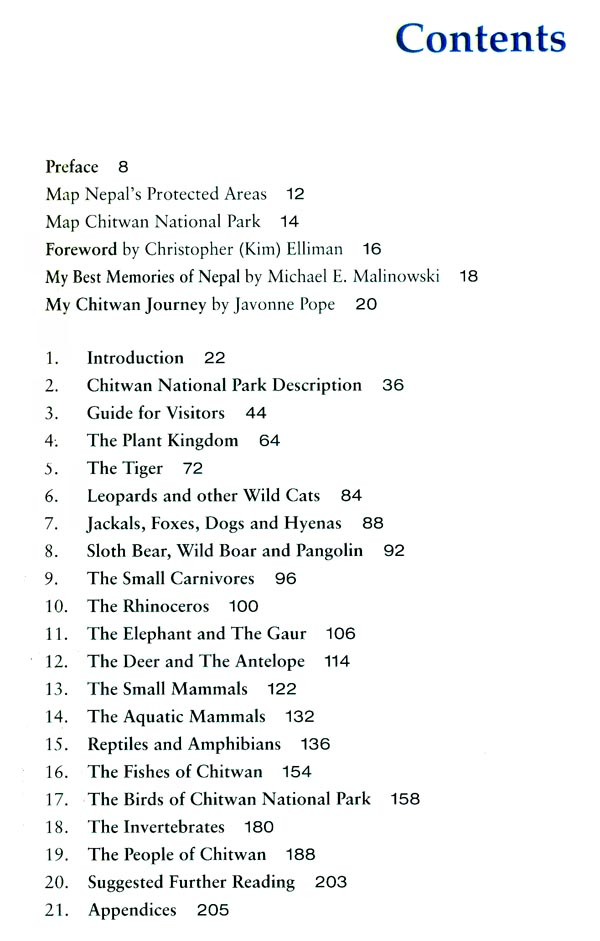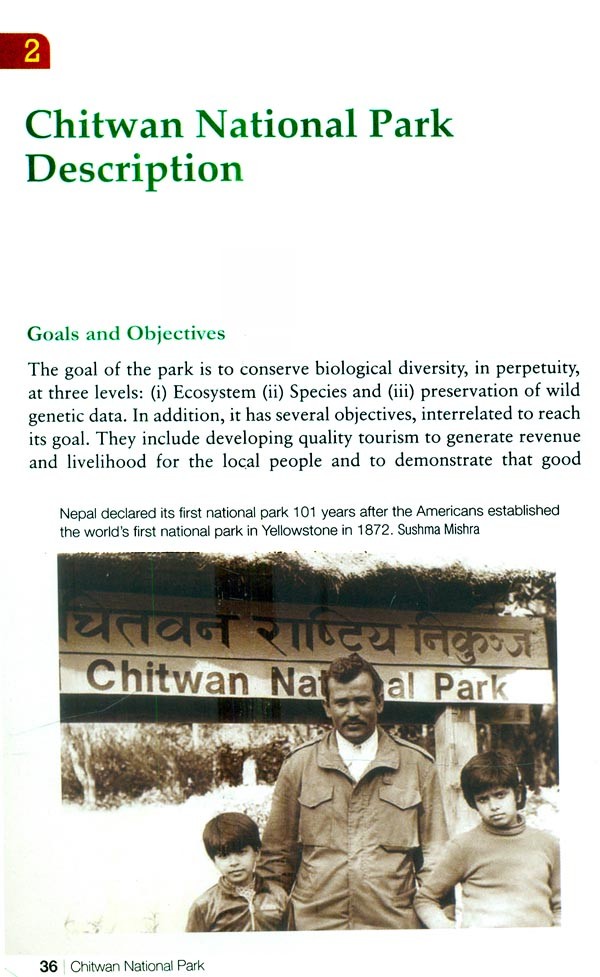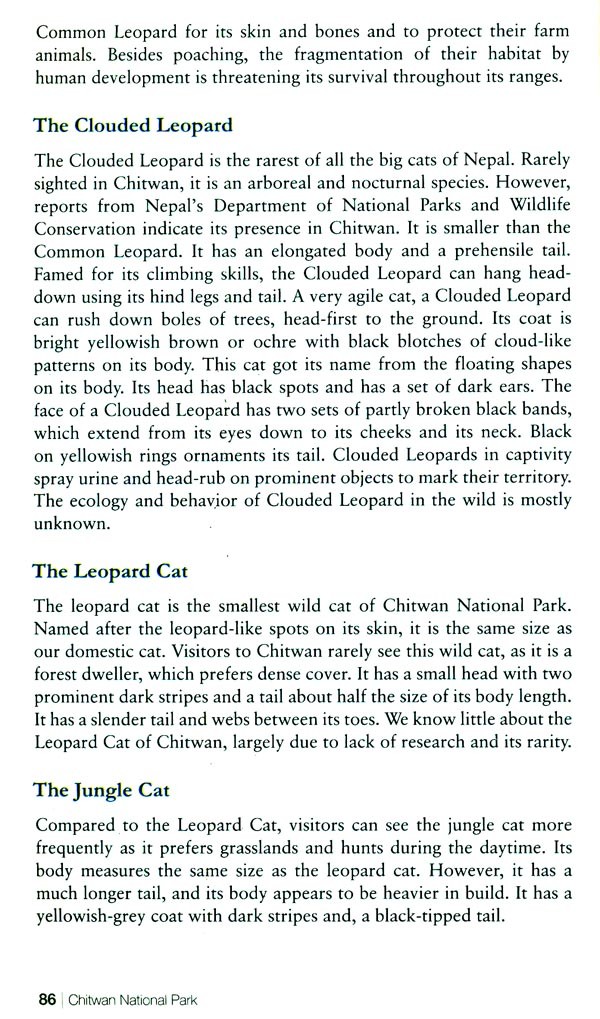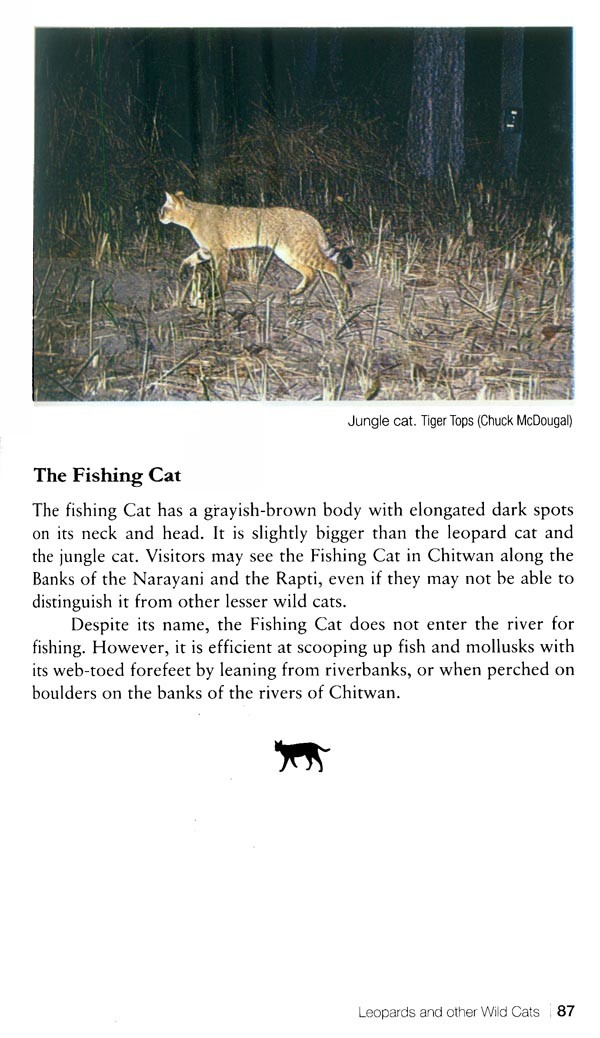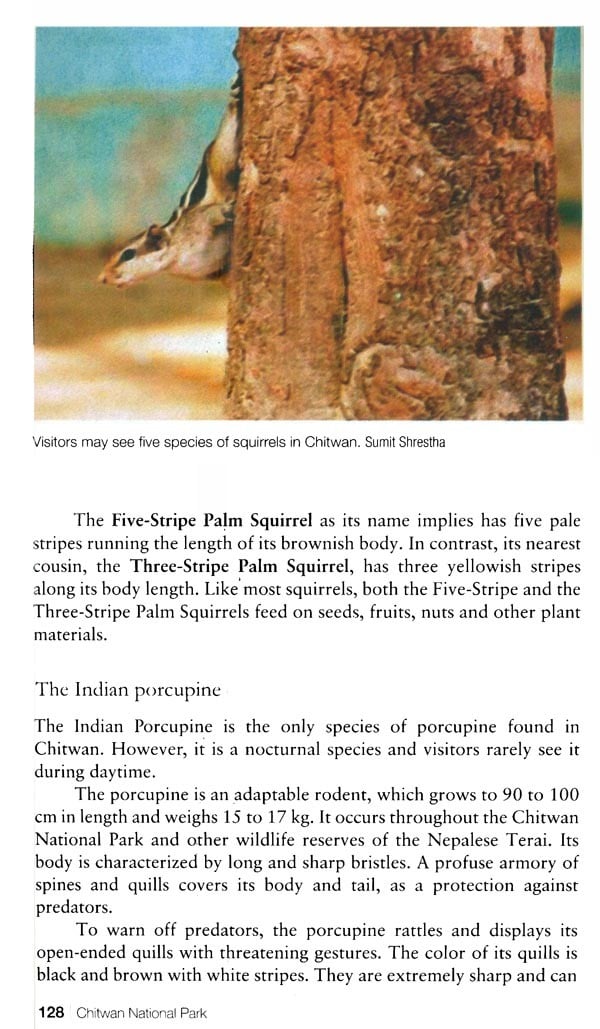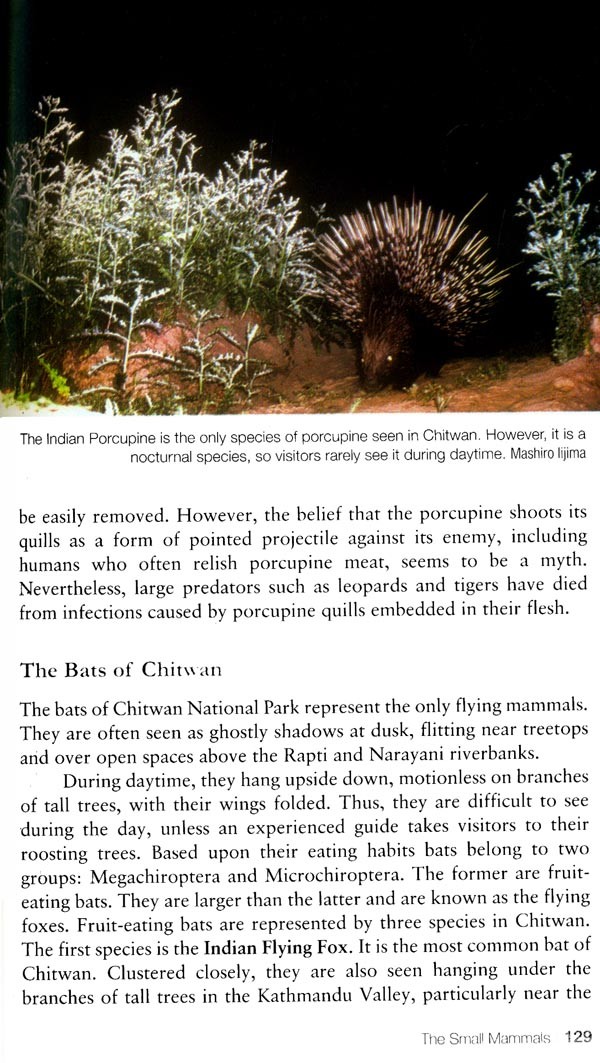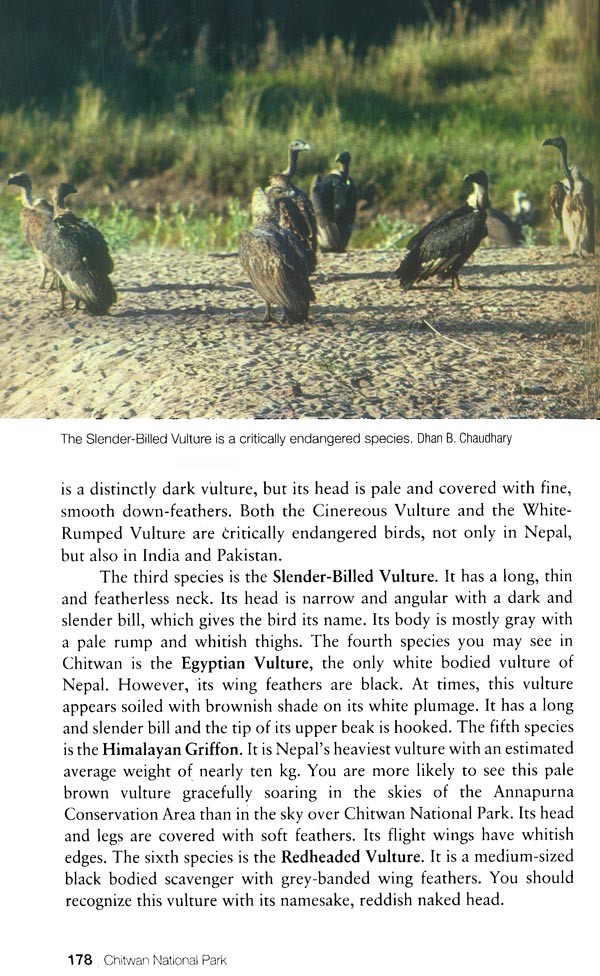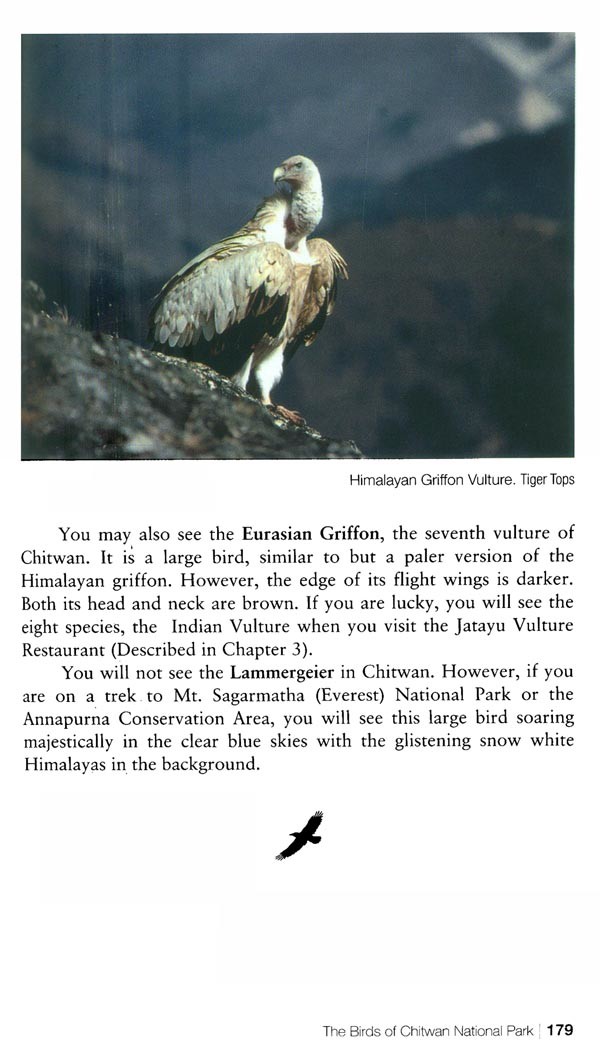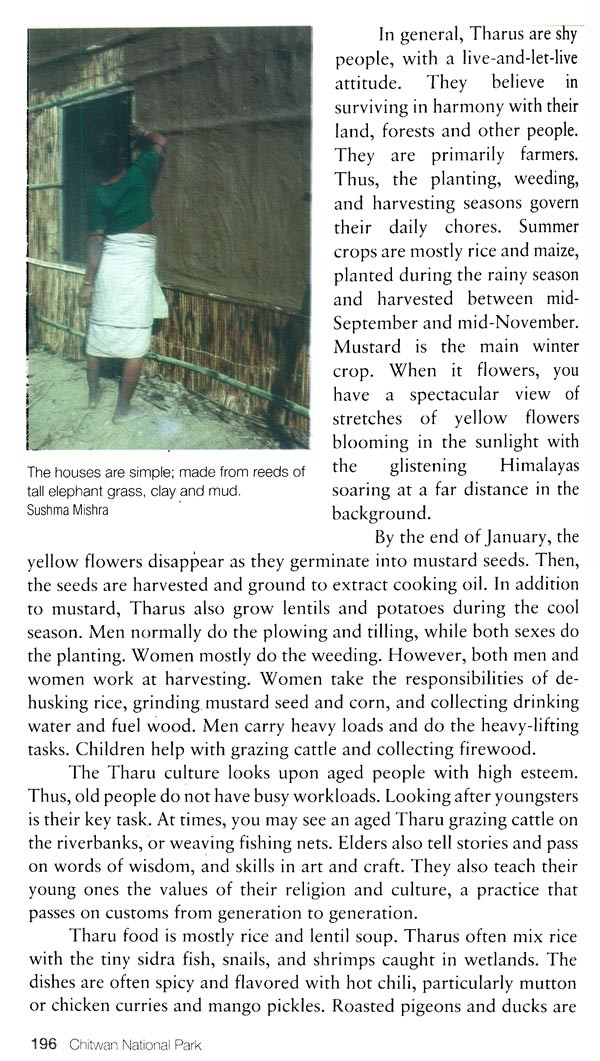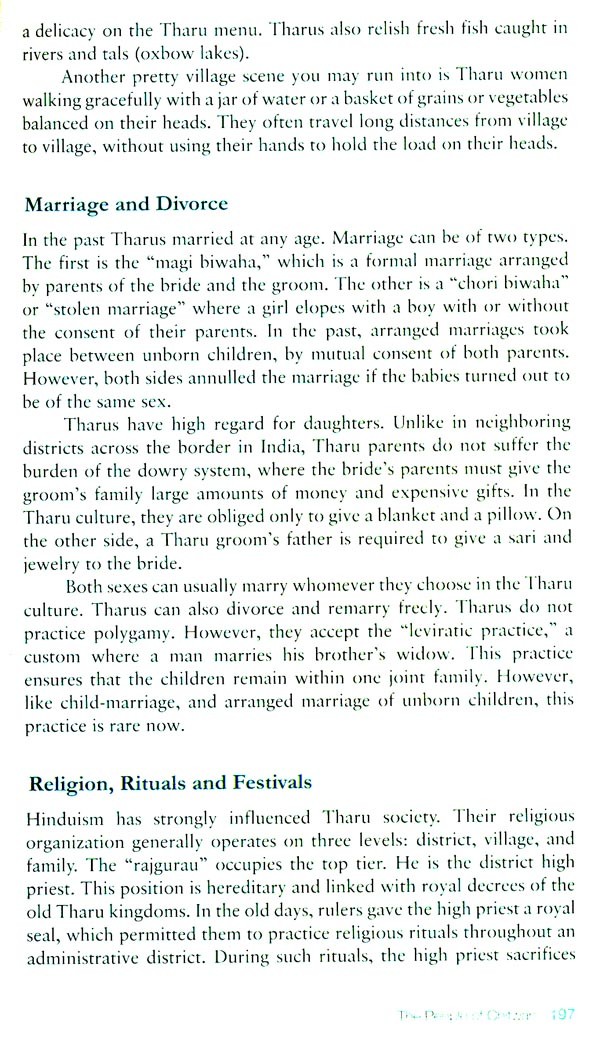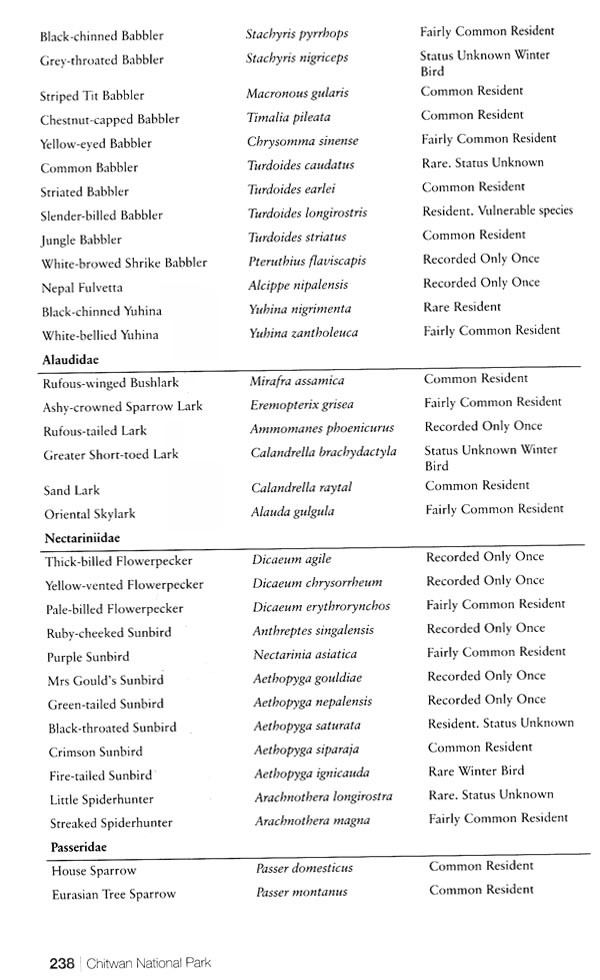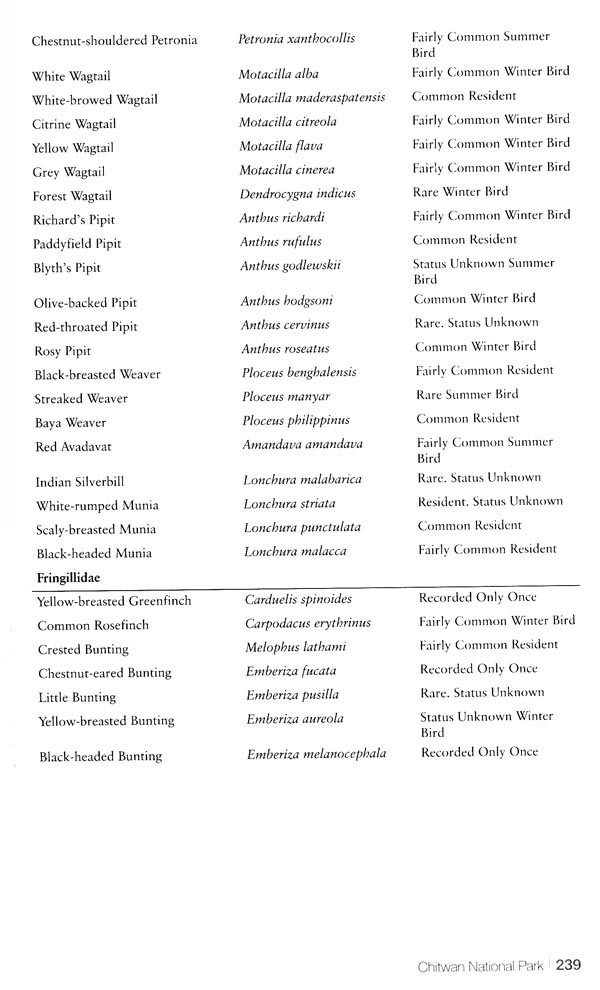
Nepal's Chitwan National Park (A Hand Book)
Book Specification
| Item Code: | AZG907 |
| Author: | Hemanta R. Mishra and Jim Ottaway Jr. |
| Publisher: | Vajra Books, Nepal |
| Language: | ENGLISH |
| Edition: | 2014 |
| ISBN: | 9789937623193 |
| Pages: | 240 (Throughout Color Illustrations) |
| Cover: | PAPERBACK |
| Other Details | 8.50x5.50 inch |
| Weight | 430 gm |
Book Description
Jim Ottaway Jr is a former American newspaper publisher, writer, and editor, who retired as a senior vice-president of Dow Jones & Co., Inc., chairman of Ottaway Newspapers Inc., and chairman of the World Press Freedom Committee. Ottaway is a long-time supporter of conservation and development in Nepal.
Historically, Chitwan was all but uninhabited. Malarial carrying mosquitoes initially kept people away, and more recently, Chitwan was off limits as the hunting preserve of the Nepalese monarchy. With great foresight, the most recent kings of Nepal formally set aside this region for national parks, preserves for the rich plant and animal life of the Indian subcontinent. However, remote, illegal poaching and squatters converting forest to farms compromised the wilderness ecosystem. As in the world over, the natural balance, the art of nature was threatened.
Hemanta Mishra arrived in Chitwan as a young wildlife biologist in 1967, sent by the Department of Forests to ensure that the balance of nature was restored and protected. Deep in the bush and far away from civilization, he brought his young and beautiful wife, Sushma, to raise a family in the midst of the dense forests and riverine savannas Hemanta lived in Chitwan off and on for almost 30 years. During his long tenure there as a wildlife biologist, he built the park notably to save the Indian Rhino and the Royal Bengal Tiger, and later transplanted 37 rhinos west to the Bardia National Park.
Hemanta's work did not end with large mammal biology. He recorded, as you will see in this book, the variety and the diversity of people, plants, and wildlife in Chitwan.
In 1991, I wrote the first field guide - Royal Chitwan National Park Wildlife Heritage of Nepal with Margaret Jefferies of New Zealand. That book, which was published in the United State, is out of print, unavailable, or pricy in Nepal. Consequently, in 2010, my colleagues, both inside and outside Nepal, urged me to write a new handbook on the Chitwan National Park. They also asked me to target the book to foreign travelers, Nepali tourists, naturalists, and Nepalese students and workers in conservation who could use it as a field guide. Nevertheless, I have relied heavily on our previous book, even if the style and contents of this book are different. In addition, I also borrowed heavily on two of my previous books, which focus on Chitwan National Park - The Soul of the Rhino and The Bones of the Tiger.
**Contents and Sample Pages**

